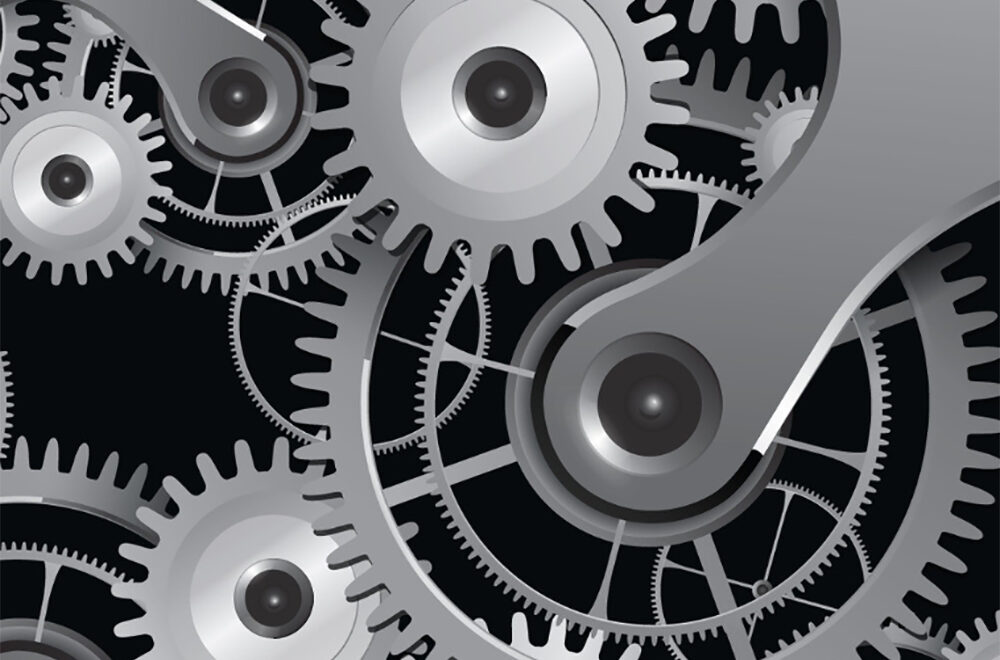Learn about gears here

Gears are an important part of many machines and mechanisms. They are used to transfer power from one part of a system to another, and they come in a variety of shapes and sizes depending on their intended application. Understanding gears and how they work can be helpful for anyone who works with or uses machines on a regular basis.
What Is Gear?
A gear is a rotating circular machine part having cut teeth or, in the case of a cogwheel or gearwheel, inserted teeth (called cogs), which mesh with another toothed part to transmit torque. Gear may also be known informally as a cog. An advantage of gears is that the teeth of a gear prevent slippage.
A gear is a type of machine element in which evenly spaced teeth are cut around cylindrical or conical surfaces. By interlocking a pair of these elements, they are used to transfer rotation and forces from the driveshaft to the driven shaft.
Gears can be classified by shape as involute, cycloid, and trochoidal gears. They can also be classified according to shaft positions as parallel shaft gears, intersecting shaft gears, and non-parallel and non-intersecting shaft gears. The history of gears is old and the use of gears appears as early as ancient Greece in B.C. in the writing of Archimedes.
One of the oldest existing gears in the world can be said to be the gears installed in machines during the ancient Greek era, known as the Antikythera machinery.
Why use gears-Learn about gears here
First and foremost, gears are used to increase or decrease the amount of power transmitted from one component to another. This is achieved by pairing gears of different sizes together in a manner .And it allows them to rotate and mesh with each other. The larger the gear, the more torque it can transmit, while smaller gears increase the speed of rotation.
Another reason for using gears is to change the direction of motion. This is done by using bevel gears, which have teeth cut at an angle. When two bevel gears are meshed together at a 90-degree angle, motion is transferred from one direction to another. This is commonly used in applications such as power saws. And the blade needs to be set at a different angle than the motor.


Finally, gears are used to synchronize the motion of different components. This is achieved using timing gears, which are gears that have teeth cut to a precise profile to ensure that they mesh at the correct time. This is commonly used in engines, where the timing of the opening and closing of the valves must be precise.
